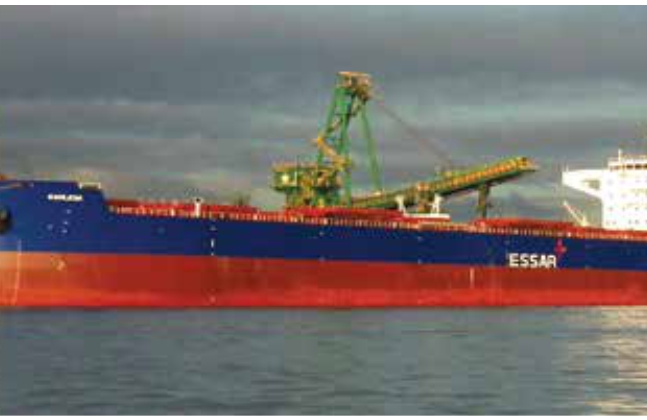[vc_row][vc_column][vc_column_text]
Essar Shipping has been straddling both the eastern and western coasts of India since the 1970s, moving raw material to its steel plants and finished goods to the market
Of late coastal shipping has gained a lot of fanfare with impetus from the government. But there are certain players who have been quietly traversing the coastal routes for the past few decades, probably even before the industry had woken up to the advantage of coastal shipping. Meet Essar shipping – one of the pioneers in coastal cargo movement Essar Shipping has been in business since 1976, and is involved in coastal cargo movement
Essar Shipping has been in business since 1976, and is involved in coastal cargo movement almost since its inception. Since the commissioning of the Essar’s Hazira Steel Complex in the early 1990s, Essar Steel has emerged as Essar Shipping’s anchor customer for coastal cargo movement. Carrying of raw material, bulk cargo and finished goods is a critical element of Essar Steel’s backward integration. Essar Shipping has been assisting in these operations, enabling Essar Steel to have quicker access both to raw materials sourced from mines in Eastern India, as well as to steel consuming markets in India and overseas.
In FY 2016-17, Essar Shipping moved almost 11 million tonnes of cargo through coastal routes, straddling both the eastern and western coasts of India.The coastal trade involves not only bulk commodities, but also finished goods. For carrying bulk cargo, the Essar Shipping fleet comprises Supramaxes, Capesizes and Mini Capesizes, Handysize bulk carriers and mini-bulk carriers. Almost all these vessels are currently being used for coastal cargo movement.
Major benefits that Essar Steel derives by using coastal routes include quicker access to raw material and finished goods can be pushed to the market within no time. It also helps Essar Steel reduce both logistics cost and the carbon footprint. In the FY 2016-17 cargo handling by Essar Shipping increased by 22 per cent. The company’s 14-vessel fleet also grew its capacity utilisation to 94 per cent from 80 per cent in the previous fiscal. Share of captive cargo in the total cargo moved increased to over 80 per cent and the coastal movement volumes almost doubled. The company also benefitted from a considerable growth in backhaul cargo both on the east and west coast because of the all-round growth in Essar Steel. The Baltic Dry Index, a key indicator of freight rates, has also gone up by four times during FY16-17 – from an all-time low of 290 (in Feb 2016) to a high of 1,300 (in March 2017). In FY17, ESL carried dry bulk cargo of almost 11.5 million tonnes, as against 9.4 million tonnes in the previous year. More than 80 per cent of its fleet carries dry bulk cargo, which includes iron ore, coal, bauxite and limestone. ESL’s two VLCCs – MT Smiti and MT Ashna – are used for crude oil transport and are employed on spot contracts to take advantage of volatility in the crude oil prices.
Challenges
Currently, the issues that plague coastal movement are the high duties charged on bunkers and other fuel oils. Indian ports also lack the infrastructure to increase coastal trade. There is an urgent need for expansion projects to reduce turnaround time and bring them at par with global peers. Increasing operational efficiency at ports and adopting digitisation in a bigger way will help mitigate these concerns significantly.
[/vc_column_text][/vc_column][/vc_row]







